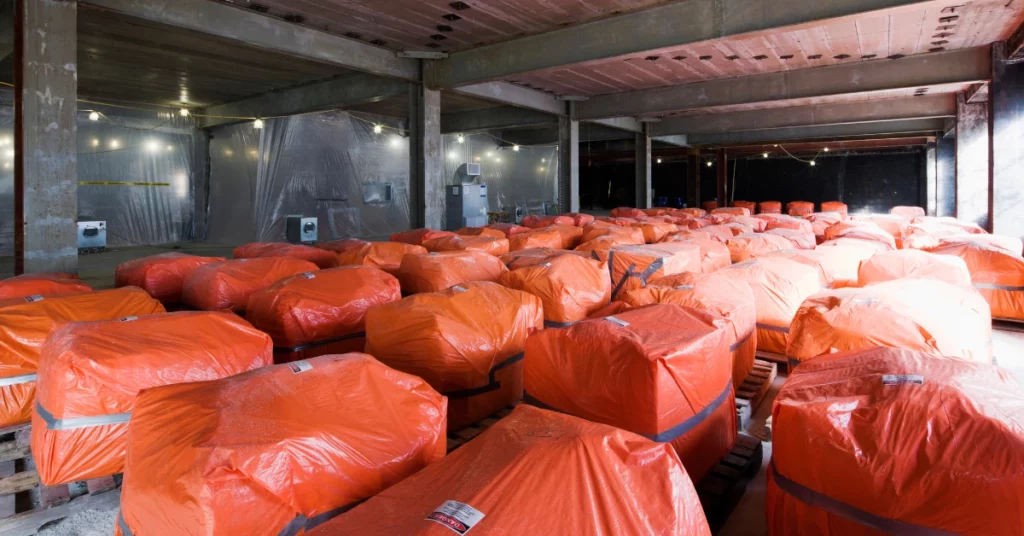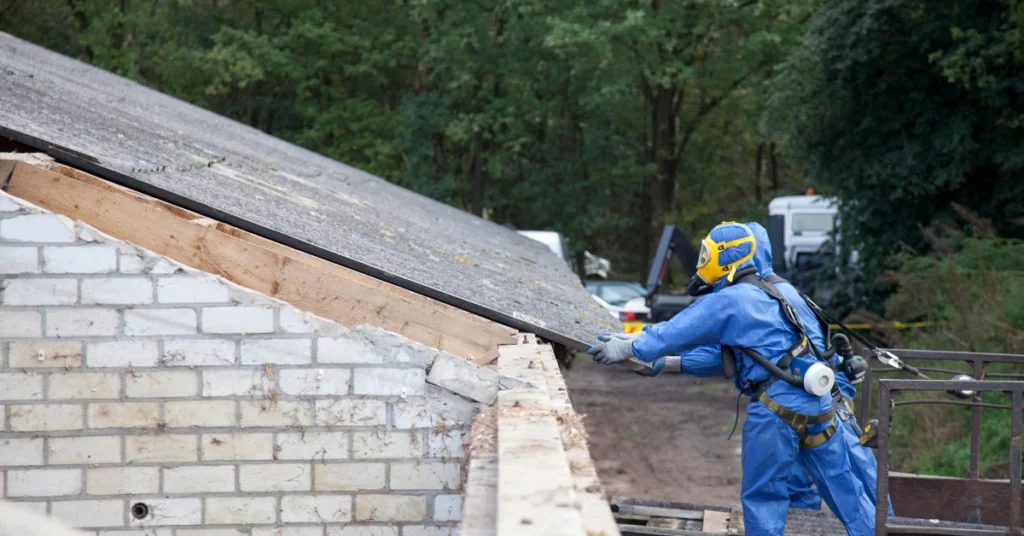You’ve just discovered what might be asbestos in your property. Now what? Asbestos surveys are the next step to confirm its presence and assess any risks. This article covers everything you need to know about asbestos inspections – from what they involve to why they’re essential.
We’ll guide you through the process, explain what to expect, and help you understand the results. Whether you’re dealing with a home, office, or industrial site, this information will help you make informed decisions about asbestos management.
What is an Asbestos Survey?
An asbestos survey is a thorough examination of a building to find and assess materials that may contain asbestos. These surveys are conducted by trained professionals who inspect the property, take samples, and provide a detailed report of their findings.
Asbestos-Containing Materials (ACMs) are any materials that contain more than 1% asbestos by volume. This definition is important because it’s the threshold used in many regulations to determine if a material needs special handling and disposal.
There are two main types of asbestos surveys:
- Management surveys: These are routine inspections to identify and manage ACMs in buildings during normal occupancy and use.
- Refurbishment/demolition surveys: These are more invasive and are required before any major building work or demolition.
The main goals of an asbestos survey are to:
- Locate any ACMs in the building
- Record the type, amount, and condition of these materials
- Assess the risk of asbestos fiber release
- Provide recommendations for managing or removing the asbestos
Surveys help property owners and managers take appropriate steps to manage asbestos safely, protecting the health of occupants and workers. They’re a key tool in identifying potential hazards before they become active threats.
How Do I Know if I Need an Asbestos Survey?
Asbestos surveys are necessary in several situations:
- Property purchase: As part of due diligence when buying a property built before 2000.
- Renovation or demolition: Before any building work that might disturb existing structures.
- Regular management: For buildings constructed before 2000, to monitor known or suspected ACMs.
- Legal compliance: To meet OSHA and EPA regulations, especially in commercial or public buildings.
You likely need an asbestos survey if:
- Your building was constructed before 2000
- You’re planning renovations or demolition
- You notice damaged building materials in an older structure
- You need to comply with OSHA’s asbestos standard (29 CFR 1910.1001) or EPA’s National Emission Standards for Hazardous Air Pollutants (NESHAP)
OSHA requires building owners to identify asbestos-containing materials before any work that could disturb them. The EPA mandates asbestos inspections before demolition or renovation of certain buildings.
Conducting a survey as part of due diligence can prevent future health risks and costly remediation. It’s a proactive step in asbestos management and regulation compliance.
Who Should Perform An Asbestos Survey?
Asbestos surveys should only be conducted by qualified professionals. These individuals have specific training, certifications, and experience in identifying and assessing asbestos-containing materials.
Key qualifications to look for:
- Accreditation from a recognized body (varies by country)
- Extensive training in asbestos identification and management
- Experience in conducting surveys in similar buildings or settings
- Knowledge of current asbestos regulations and guidelines
In the United States, the Environmental Protection Agency (EPA) and Occupational Safety and Health Administration (OSHA) provide guidelines for asbestos professionals. Other countries have similar regulatory bodies overseeing asbestos-related work.
When choosing a surveyor:
- Verify their credentials and ask for references
- Ensure they carry appropriate insurance
- Check if they’re members of relevant professional associations
Hiring a qualified professional is crucial. They have the expertise to accurately identify ACMs, assess their condition, and provide appropriate recommendations. This helps ensure the safety of building occupants and compliance with relevant regulations.



